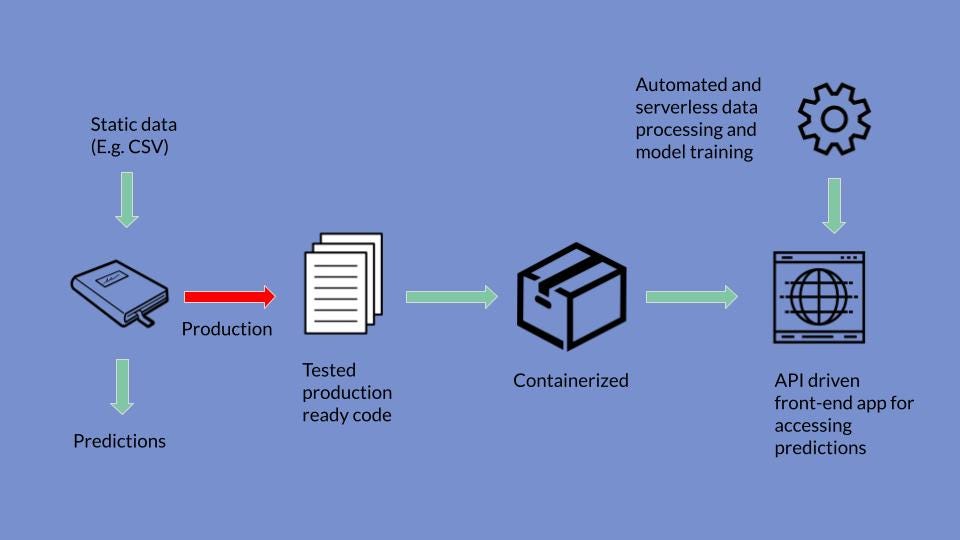What is the Best Way to Deploy an ML Model in Production?
In today’s data-driven world, deploying machine learning (ML) models in production is a critical step towards harnessing the power of artificial intelligence. Whether you’re a seasoned data scientist or just getting started with ML, understanding the best way to deploy an ML model can make or break your project’s success. In this comprehensive guide, we’ll explore the ins and outs of ML model deployment, providing you with valuable insights, tips, and answers to frequently asked questions. Let’s dive in!
Machine learning models have transformed industries, from healthcare to finance, by enabling data-driven decision-making. However, the journey from model development to deployment can be challenging. To ensure your ML model delivers real-world impact, you need a well-defined strategy. In this article, we’ll guide you through the process, sharing expert insights and practical advice.
The Fundamentals of ML Model Deployment
The first step in deploying an ML model is understanding your specific use case and goals. ML model deployment isn’t a one-size-fits-all process. It requires a tailored approach. Here are some key considerations:
- Define Your Objectives: Begin by clearly defining your deployment objectives. Are you aiming to automate a specific task, enhance decision-making, or optimize a process?
- Select the Right Model: Choose a machine learning model that aligns with your objectives and dataset. Common choices include regression, classification, and neural networks.
- Data Preparation: Ensure your data is clean, well-structured, and representative of the real-world scenarios your model will encounter.
- Model Training: Train your ML model on historical data, using techniques such as cross-validation to assess its performance.
- Evaluation Metrics: Determine the success metrics for your model. Common metrics include accuracy, precision, recall, and F1 score.
Strategies for Effective ML Model Deployment
Deploying an ML model goes beyond code and algorithms. It involves a holistic approach that encompasses various aspects:
- Scalability: Consider the scalability of your model. Will it handle increased workloads as your business grows?
- Model Monitoring: Implement robust monitoring to detect model drift and ensure it continues to perform well over time.
- Version Control: Maintain version control for your models and associated code to track changes and roll back if necessary.
- Security: Prioritize model security to protect sensitive data and prevent malicious attacks.
- Documentation: Create comprehensive documentation for your model, including its purpose, input/output specifications, and usage guidelines.
Frequently Asked Questions
Q: How can I ensure the reliability of my deployed ML model?
To ensure reliability, regularly retrain your model with fresh data. Monitoring for performance degradation is also crucial, and you should have a plan in place for model updates.
Q: Are there any best practices for model deployment in cloud environments?
When deploying in the cloud, choose a reputable provider, leverage their ML services, and pay attention to data security and compliance with relevant regulations.
Q: What role does DevOps play in ML model deployment?
DevOps practices, such as continuous integration and continuous deployment (CI/CD), are invaluable for automating and streamlining the deployment process.
Q: Should I consider using containerization for my ML model?
Containerization, using tools like Docker, can simplify deployment by packaging your model and its dependencies into a portable container.
Q: How can I handle model explainability in production?
For transparency and compliance, consider using techniques like SHAP (SHapley Additive exPlanations) to explain your model’s predictions.
Q: What are some common challenges in ML model deployment?
Common challenges include data quality issues, integration complexities, and the need for ongoing maintenance and updates.
Conclusion
Deploying an ML model in production is a journey that demands careful planning, continuous monitoring, and a commitment to excellence. By following best practices, staying informed about industry trends, and seeking guidance when needed, you can position your ML project for success. Remember, the best way to deploy an ML model is one that aligns with your unique objectives and evolves with your organization’s needs.
READ MORE: How Do You Get a Job as a React Developer?






